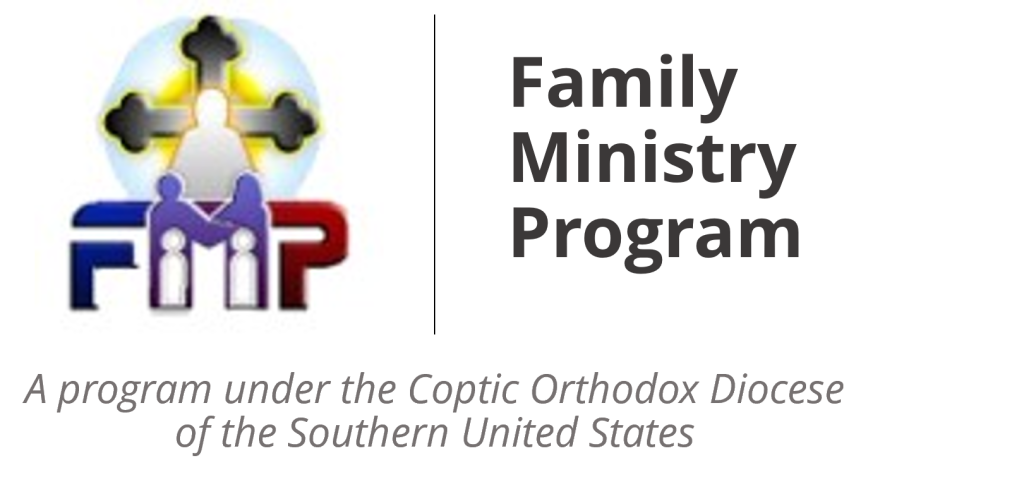As it is in the Orthodox tradition the crowning ceremony is filled with rites & symbolism. This pamphlet explains those rites & symbolism in the mystery of Holy Matrimony.
The Procession. The crowning ceremony begins with the Procession. The deacons walk before the bride and groom as angels bringing them to the altar of our Lord Jesus Christ in order to crown them, bless them and sanctify them. The bride is at the right hand of the groom as the psalm says “the queen sits at the right hand of the king”. The bride does not walk down the aisle with her father because in the Orthodox tradition it is the Lord who gives the bride to the groom as God brought Eve to Adam. In the Processional hymn the deacon’s chant “Take unto you O groom your bride, Jesus Christ has given her to you… and at the hand of the priest He has given her to you”.
The Tying of the Rings. The priest takes the rings and ties them together with a red ribbon 3 times. As he ties them, the priest proclaims, “What God has joined together, let no man separate”. This is because marriage is a covenant not a human contract. Through the blood of Jesus Christ, represented by the red ribbon, the marriage covenant is made. Additionally, unlike the engagement ceremony, it is the priest (God’s steward) who places the rings on the fingers of the bride and groom sealing the union of three: the bride, the groom and God.
The Thanksgiving Prayer. The Crowning Ceremony, along with all the sacraments in the Orthodox tradition begins with the prayer of Thanksgiving. Through this prayer we give thanks to God for His great glory.
The, Vestments and Red Ribbon. The vestments (priestly robes) are put upon the bride and the groom because they are both responsible for the family priesthood. The red ribbon (sash) that is tied around both the bride and the groom represents their role as prophets for the family just like the girdle around St. John the Baptist.
The Readings. Ephesians 5:32 states “this is a great mystery.” Marriage is not only a covenant but also a mystery (a mystery is invisible grace or blessing that is received through visible means). The deacons respond to the Gospel reading explaining that those who the Holy Spirit unites are like a harp. Each string has its own sound; yet, together they make harmony in unity. From the psalms it is read “your wife shall be like a fruitful vine in the very heart of your house”. The word vine is used instead of tree because a vine needs a trellis to support it. Likewise, the wife needs to lean on, trust, and rely on her husband. Similarly, the husband supports, loves and cares for his wife in order for the children to grow up “like olive branches”.
The Litanies (Short prayers). In one of the litanies, the priest says “O God, hear the voice of their supplication.” This indicates that during the Crowning Ceremony the couple also offers prayers and upplications. It is very important that the bride and groom be attentive during the ceremony.
The Nicene Creed. The Creed is prayed following the litanies. Since the Creed is the foundation of the Orthodox faith, the house / family must be built on the “rock” of faith in order to stand forever with the grace of God.
Anointing with Oil. During the ceremony, both the groom and the bride are anointed with oil, as were the kings, priests and prophets. The priest prays “O God who anointed out of the fruit of the rich olive tree priests, kings and prophets…” They are considered kings because they rule (serve) the family as king and queen and institute God’s constitution (the Holy Scriptures) over the family. They are priests because they both offer sacrifices of prayers and intercessions on behalf of the family before the altar of God in their home. And they are seen as prophets because they both bring the Word of God and deliver it to the family.
The Crowns. The crowns are placed upon the head of both the bride and the groom because they are the king and queen of the family.
The Epiclesis (Invocation of the Holy Spirit). As a mystery, the Holy Spirit descends on the couple .The priest puts their heads together and makes the sign of the cross three times on their heads saying “… Crownthem with glory and honor O Father. Amen. Bless them O only Begotten Son. Sanctify them O Holy Spirit”. The prayer continues with, “Crown them as royal. Bless them as prophets, sanctify them as priests”. The priest takes the hand of the bride and places it in the hand of the groom. Then on top of their hands he places a veil of communion and usually they receive the Eucharist with this veil so that their union becomes communion with Christ. According to the Original Tradition, the crowning ceremony is performed during the Divine Liturgy. In the Original Tradition the bride and the groom place their heads together and the priest uses a large veil to cover their heads to symbolize their unity.
The Catechesis (Instructions). Practical instructions are given to both the bride and groom. The groom is given a command to hasten to do that which will gladden his wife’s heart, to excel in doing all that is good for her and to take responsibility for her. The bride is given the command to love, honor, and respect her husband so that the Lord may bless her, increase her livelihood and grant her blessed children who will delight her eyes.
Tradition, the crowning Ceremony is done during the Divine Liturgy.
